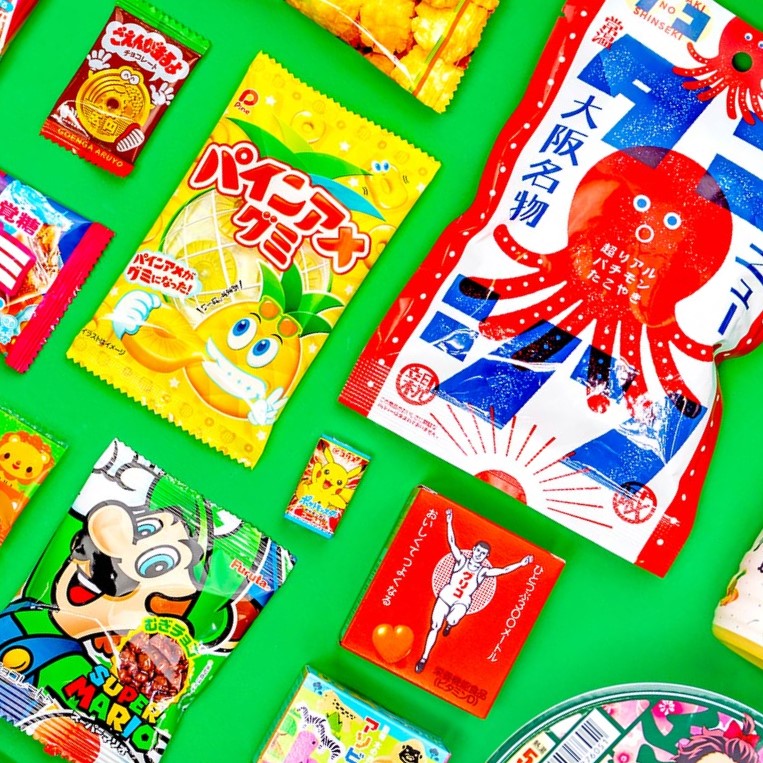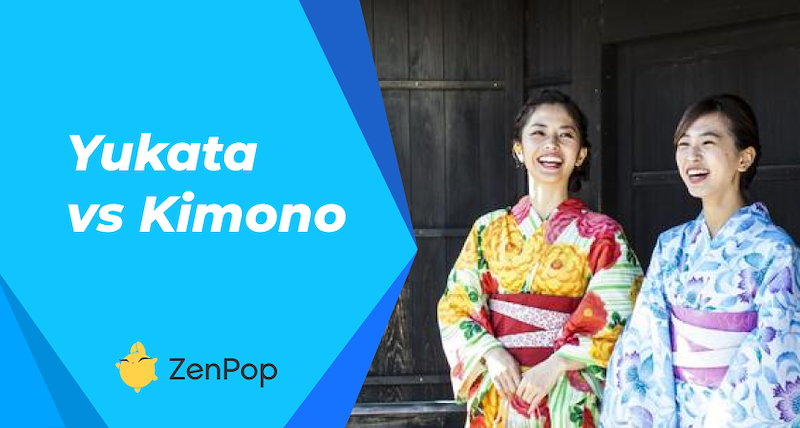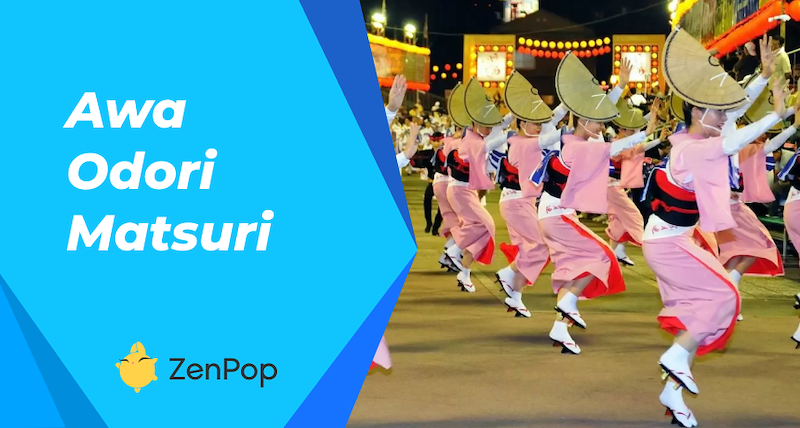
</title><meta name="robots" content="noindex"> Awa Odori Matsuri
Awa Odori Matsuri (阿波踊り祭り), the largest dance festival in Japan, is part of the Obon celebration. One would expect that an event dedicated to remembering deceased relatives and ancestors is spiritual and solemn. But that isn’t the case with Awa Odori Matsuri as it is one lively affair.
Awa Odori Festival has been held for centuries in Tokushima Prefecture, which is located in the southern part of Japan. The festival attracts millions of locals and tourists as well as thousands of dancers.
Do you plan to visit Japan and witness the vibrant Awa Odori Matsuri firsthand? Let this post be your quick guide to this summer event.
What does the Awa Odori festival celebrate?
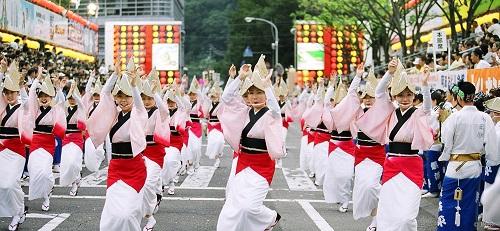
In Buddhist belief, it is said that during the festival of the dead (locally known as Obon, お盆) spirits of the deceased return to Earth to visit their descendants. Awa Odori Matsuri grew from this tradition. The dance is performed to commemorate one’s ancestors during the Obon holiday.
What Happens in Awa Odori Matsuri
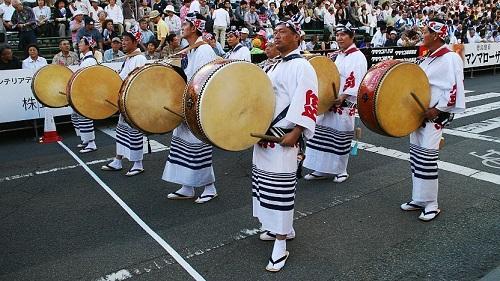
Male and female dancers take part in this lively summer festival. Every participant belongs to a dance troupe called ren. Each group consists of people who march on the streets and dance in unison to the accompanying traditional music played by a live band whose performers use flutes, bells, shamisen, and drums. Some ren members practice the Awa Odori performance for as much as one year.
The troupes, which come from different parts of Japan and the world, apply to take part in the celebration. One night prior to the event, the Zenyasai (前夜祭), or the eve of the celebration, is held. The top ren of the area gather for a stage performance.
The Fool’s Dance
People who regularly witness the festivities would have heard of the chant used by these performers. It goes like this:
“Odoru aho ni miru aho; onaji aho nara odoranya son son.”
The chant means “It’s a fool who dances and a fool who watches; if both are fools, you might as well dance!"
Awa Odori is often known as the “fool’s dance” because of the said chant. The fairly simple dance only involves making one’s arms and legs move forward energetically. Each ren has their own style and interpretation of this dance.
The dancers also energize themselves through chanting hayashi kotoba (はやしことば), which are traditional exclamations to maintain the rhythm. These chants include:
- あやっとさ! (Ayattosa!)
- ホヤさ! (Hoyasa!)
- エライヤッチャ エライヤッチャ ヨイヨイヨイヨイ!("Erai yaccha, erai yaccha, yoi, yoi, yoi, yoi")
Observers can take part in the dance since part of the Awa Odori philosophy is to dance merrily and enjoy together. People of all ages and gender are welcome to dance during the festivities.
Women’s Dance
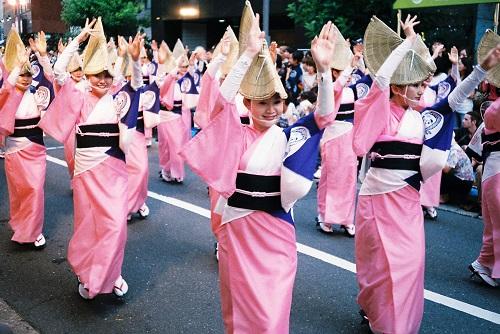
In addition to the Awa Odori dance performed by both men and women, there is another unique dance style exclusively performed by women. It showcases a more graceful and elegant form of dance compared to the fun and energetic Awa Odori.
Female dancers wear fan-shaped, braided hats called amigasa (編み笠), which are made from bamboo, Japanese cypress bark, sedge, and straw. The brim of this hat is wide and circular, allowing the wearer to hide their face. Dancing on their tiptoes, the women use footwear called geta (下駄), a traditional wooden sandal.
How long is Awa Odori Matsuri?
The festival is a yearly, four-day event in Tokushima. It starts on August 12 and ends on August 15.
The History of Awa Odori
To date, the origin of Awa Odori remains unclear, but there are several theories surrounding its beginnings. Although each of them holds truths to some extent, they are all still up for debate. Below are some of the popular Awa Odori theories.
Awa Odori Was a Drunk Dance Party
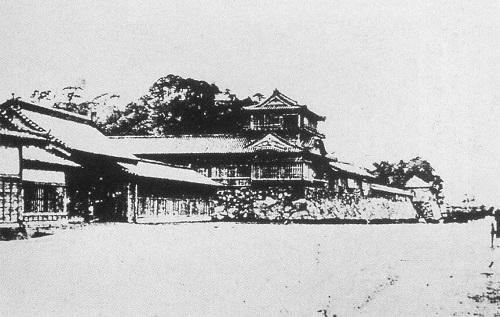
One theory suggests that Awa Odori started as a celebration in a region called Awa, which is currently known as the Tokushima prefecture. Upon the completion of Tokushima Castle, Hachisuka Iemasa, the feudal lord of Awa at the time, held a celebration to end all celebrations.
The dance steps of Awa Odori were believed to be formed when the townsfolk were too drunk, they swayed in frenzy as they danced. Bit by bit, a simple piece was created by the musicians to fit the lively dance.
Awa Odori Is Connected to Noh Theater
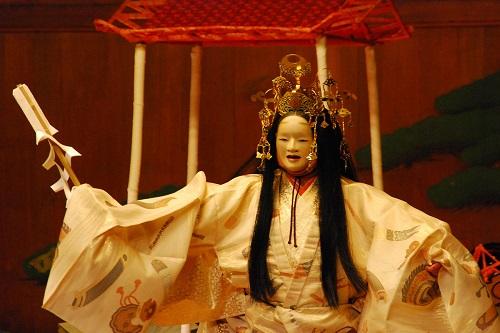
Another speculation refutes the previous theory. According to local historical records, the folk dance named furyu (風流), which evolved into today’s Noh theater, was performed in the Awa province in the 16th century. It is said that this dance gave birth to Awa Odori.
Awa Odori Originates From Obon
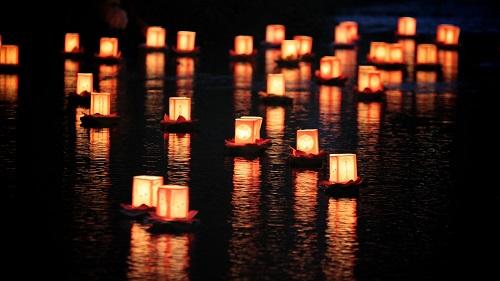
Lanterns are used for welcoming the spirits during Obon.
Another theory proposes that Awa Odori has its roots in the Obon festival. Although praying for the deceased is supposedly a solemn activity, the festivities during this event tend to be wild. Seventeenth-century feudal laws hinted that Obon dancing was regarded as a public disturbance. The happenings at the time may have inspired the birth of Awa Odori.
The Dwindling and Revival of Awa Odori Matsuri
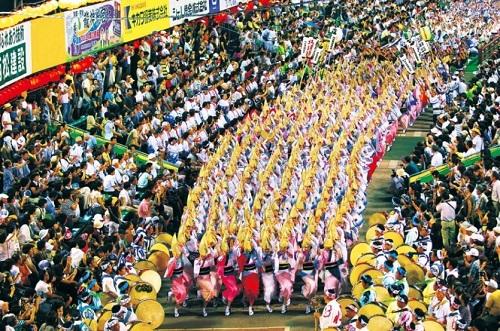
It may be hard to believe but this famous festival dwindled during the Meiji Era (a period between 1868 and 1912). This was caused by the collapse of an industry that supported the festivities. Indigo trade in Tokushima died down due to cheaper imports
The festival saw its revival during the Showa Era. Politicians in Tokushima introduced the term “Awa Odori” and advertised it as the area’s biggest tourist attraction.
Good To Know
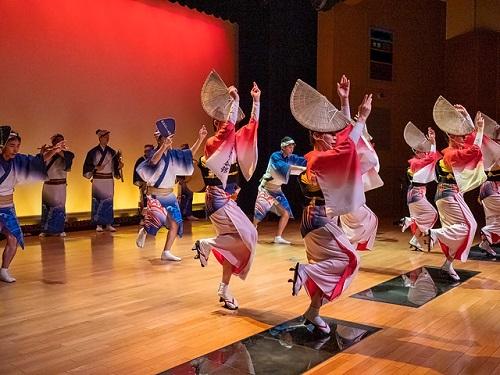
If you want to experience Awa Odori but you can’t come on the dates of the event, you can still enjoy it by visiting Awa Odori Kaikan any time of the year.
Located near the foot of Mt. Bizan, this museum allows visitors to watch local groups perform traditional dance and try the area’s local products. Performances are held four times a day, with the last show happening at night. Take note that the closing show is the most expensive experience, so plan accordingly.
The surrounding area will give you great views. You can also check out the shops or take a stroll around the area. For those who can ride bikes, Awa Odori Kaikan offers bicycle rentals.
